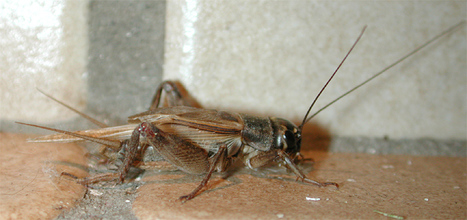Long-horned Orthoptera (Suborder: Ensifera)
Description
Antennae
- greater than 2/3 body length (except mole crickets)
- more than 30 segments
- slender
Legs
Abdomen
- ovipositor long
- tympanum (hearing organ) on the front tibia in most groups (or absent)
Diversity in Newfoundland
- 2 Families
- 3 Subfamilies
- 4 Genera
- 5 Species
Families in Ensifera
Move up a level to Orthoptera
- True Crickets
(Family: Gryllidae)Antennae
Eyes
- three ocelli (simple eyes) on forehead
Wings
- lie flat on body
- very variable in size between species, being reduced in size in some and missing in others
- forewings (tegmina) are elytra made of tough chitin
- hind pair are membranous, folding fan-wise under the forewings
Legs
- one or more tympani on front tibiae
- femora of the back pair of legs are greatly enlarged for jumping
- tarsi 3-3-3
Thorax
- pronotum is trapezoidal in shape, robust and well-sclerotinized. It is smooth and has neither dorsal or lateral keels (ridges)
Abdomen
- pair of long cerci on tip of abdomen
- long narrow ovipositor (except sword-tailed)
Diversity in Newfoundland
- 2 Subfamilies
- 3 Genera
- 4 Species
- Camel Crickets
(Family: Rhaphidophoridae)Antennae
- touching or nearly touching at base
Size
- 9-50mm
- less than 100mm including legs
Color
Body
Wings
Legs
- very long legs
- long femora and equally long, thin tibiae
- hind femora extend beyond tip of abdomen
- no tympana (hearing organs) on front tibiae
- tarsi 4-4-4
Thorax
- pronotum resembles abdominal terga
Diversity in Newfoundland
- 1 Subfamily
- 1 Genus
- 1 Species

